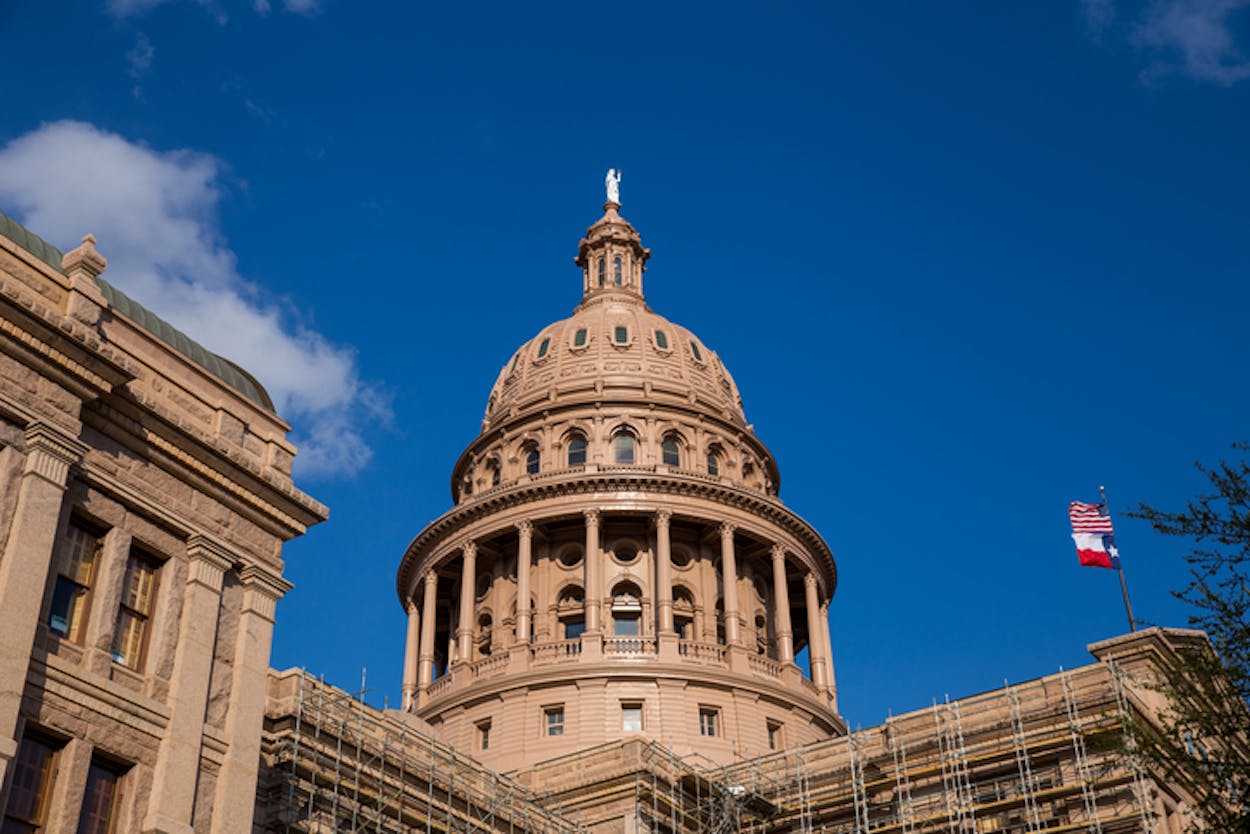One of the most flatly wrong predictions I have ever made was that the Eighty-fourth Legislature, in 2015, would be a comparatively sane one. Texas economic indicators told me that the legislators returning to Austin that year could expect a comparatively sunny Biennial Revenue Estimate. In other words, they would be able to maintain the spending levels in the well-constructed budget the Eighty-third Legislature passed in 2013, plus, perhaps, make new investments in critical priorities such as infrastructure and education. Furthermore, the new statewide officials who would be sworn in that January would, I thought, be able to take a break from campaign mode, since they wouldn’t face another election until 2018.
Boy, was that naive. I was right about the budget outlook, but completely failed to anticipate that the Texas Senate would seek to allocate our state’s scarce resources to property tax “relief” rather than doing something even remotely useful with that money. I would not have expected Texas Republicans to target Medicaid Acute Care Therapy the way that they did; I’m not a fan of Medicaid myself, or the outsized share of state spending allocated to it, but that’s literally the part of the program that provides lifesaving therapy to poor and disabled kids—or used to, at least. Furthermore, I would not have expected a grown man in high office, like Lieutenant Governor Dan Patrick, to be more easily intimidated by constitutional-carry activists than I am; Texas DPS can’t fully protect a statewide official, I guess, from the Ghost of Republican Primary Future.
Over the past two days, then, I’ve been oddly relieved by updates from the Texas Taxpayers and Research Association’s annual meeting, which confirm that everyone agrees about one thing, at least: next year, the Lege won’t have a surplus to squabble over. Although Texas has not fallen into recession, despite feverish speculation about the implications of the fall in oil prices that began in the second half of 2015, our economic growth has softened. The state’s overall revenue collections, correspondingly, are more or less flat. The comptroller, Glenn Hegar, isn’t sounding the alarm about a looming shortfall and–given the state’s economic indicators, I don’t expect that the 2018-19 Biennial Revenue Estimate, which will be released in about three months, will project one. But Hegar has been warning the Legislature that the next BRE won’t be padded by several billion dollars leftover from the current fiscal biennium. Dale Craymer, president of TTARA, is among the analysts warning that we should therefore expect budget cuts: the Eighty-fifth Legislature won’t have less to work with than the Eighty-fourth Legislature did, two years ago, but it will have to make the money go further, for various reasons.
Public education, which makes up the largest share of state spending, helps illustrate the issue. The Texas Supreme Court upheld our state’s system of school finance in May, ruling that current funding levels are sufficient to pass constitutional muster. Democrats would like to do more than the minimum, though, as would some Republicans; Larry Taylor, the Senate Education Chair, indicated this morning that his is among them, because investments in education are investments in our future workforce. In any case, the number of students enrolled in Texas public schools has grown. Furthermore, the federal government has ordered Texas to scrap the artificial cap on enrollment in special education that Brian Rosenthal, reporting for the Houston Chronicle, has exposed. Meanwhile, Dan Patrick clearly wants to revisit the issue of vouchers. The Eighty-fifth Legislature’s ability to focus on big-picture issues will be imperiled, once again, by politics. But its ability to squander the state’s scarce resources on political pet causes will be imperiled by the next Biennial Revenue Estimate; the revenue Texas will collect over the next two years is, by and large, already spoken for.







